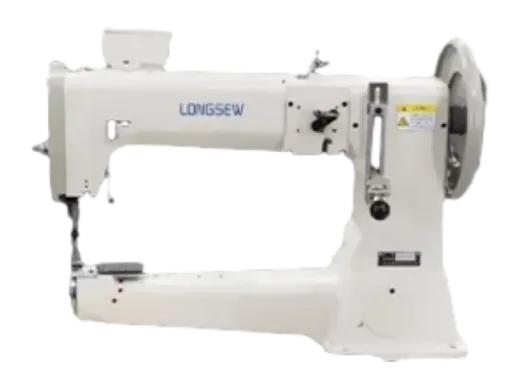Exploring the Benefits of Double Needle Coverstitch in Garment Construction
Understanding Double Needle Coverstitch A Comprehensive Guide
When it comes to sewing, the techniques and tools available can greatly transform the quality and durability of garments. One such technique that has gained popularity among both amateur and professional seamstresses is the double needle coverstitch. This method not only enhances the aesthetic appeal of a finished product but also reinforces seams to withstand the test of time.
What is a Double Needle Coverstitch?
The double needle coverstitch is a sewing technique that utilizes two needles and a specialized stitch type. Unlike traditional sewing where a single needle creates a simple stitch, the double needle coverstitch employs two parallel needles that produce two lines of stitching on the top side while creating a durable chain stitch on the underside. This stitch is widely used in the production of athletic wear, casual clothing, and knit fabrics due to its elastic nature and ability to stretch without breaking, making it ideal for garments that require movement.
The Advantages of Using a Double Needle Coverstitch
1. Professional Finish The coverstitch provides a clean and professional finish that is often found in ready-to-wear garments. The two rows of stitching on the top give a polished look, while the underside remains practical and sturdy.
2. Flexibility and Durability One of the standout features of the coverstitch is its ability to stretch. This is particularly beneficial when working with knit fabrics, as it allows seams to flex with the fabric without causing strain or ripping.
3. Versatility While the double needle coverstitch is primarily used for hems, it can also be employed for decorative purposes, creating unique designs on garments. By varying the thread colors or using contrasting fabrics, the coverstitch can transform a simple hem into a stylish statement.
4. Speed and Efficiency The coverstitch can significantly speed up the sewing process, especially when finishing hems on multiple garments. With practice, seamstresses can achieve consistent results in a shorter time frame compared to other methods.
Setting Up for a Double Needle Coverstitch
double needle coverstitch

Before diving into the sewing process, proper preparation is essential for achieving the best results. Here are some steps to follow
1. Choose the Right Machine Not all sewing machines are equipped to perform a coverstitch. Invest in a serger or a specialized coverstitch machine that is designed for this purpose.
2. Select Appropriate Needles and Thread The double needle coverstitch requires twin needles, which can be found in various sizes. Ensure that you select a needle size appropriate for the fabric you are working with. For threads, a combination of regular sewing thread and specialty threads designed for stretch fabrics can yield better results.
3. Adjust Tension Settings Correctly adjusting the machine's tension settings is crucial for achieving the desired stitch quality. Each thread should glide smoothly, creating even tension across the fabric.
Tips for Success
- Practice on Scrap Fabric Always test your settings on a scrap piece of fabric before proceeding with your project. This ensures that your machine is correctly set up and helps you become comfortable with the stitch.
- Keep Fabric Aligned As you sew, make sure the edges of your fabric are aligned. Uneven fabric can lead to distorted hems and less professional results.
- Finishing Techniques After completing your coverstitch, consider finishing the raw edges with a serger to prevent fraying, especially in knit fabrics.
Conclusion
Incorporating the double needle coverstitch into your sewing repertoire can elevate your garment-making skills to a new level. With its professional finish, durability, and versatility, it is a technique that can enhance not just the look but also the functionality of your projects. Whether you are crafting activewear or simply adding flair to everyday clothing, mastering the coverstitch will undoubtedly open new doors in your sewing journey.
-
Industrial Cylinder Arm Sewing Machine: Revolutionizing Heavy-Duty SewingNewsJul.28,2025
-
Cylinder Arm Sewing Machine: Perfect for Special Sewing ApplicationsNewsJul.28,2025
-
Cylinder Bed Sewing Machine: Essential for Sewing Complex MaterialsNewsJul.28,2025
-
Heavy Duty Sewing Machine: The Essential Tool for Industrial ApplicationsNewsJul.28,2025
-
Computerized Pattern Sewing Machine: Revolutionizing Precision StitchingNewsJul.28,2025
-
Heavy Duty Industrial Sewing Machine: Power Meets PrecisionNewsJul.28,2025
-
Leather Sewing Machine: The Industrial Standard for Tough MaterialsNewsJul.18,2025





























